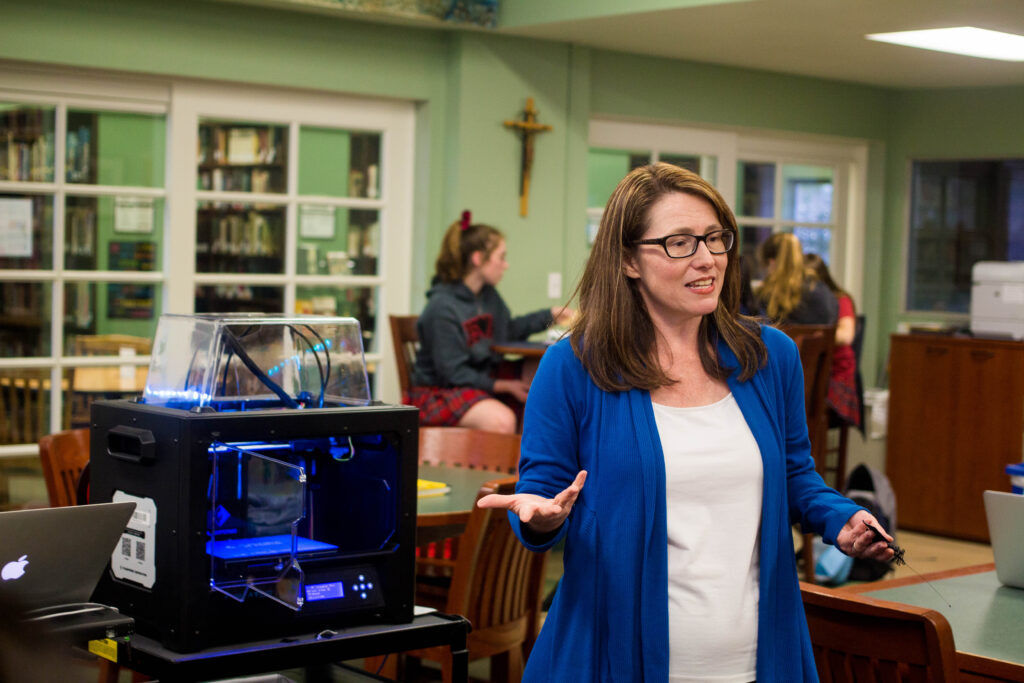There is an increasing national educational obsession with STEM, which stands for science, technology, engineering and math. This national obsession is aimed at increasing student proficiency in these technical fields so that they are prepared to live in and become leaders in an increasingly technical world. And with any educational initiative, there are many variations as different constituencies move to be included. So STEM becomes STEAM (add arts) becomes STREAM (add reading/writing/research), etc. Which begs the questions: Is there value to identifying a particular set of ideas for educational emphasis, and what are the potential pitfalls of this emphasis?

At FSHA, we in the science department have been unofficially STEM obsessed for our entire careers. What this means is that in addition to teaching science, we work to integrate technology and engineering thinking into our coursework when it is helpful. And of course, we utilize the mathematical skills students acquire in the math department. This culture of integrating the TEM into our science classrooms is part of what initially made FSHA appealing to us. The educational approach of our current faculty has led to an outstanding science program through this integration, but insuring that the work we have done continues and expands beyond any of us as individual teachers requires that we inculcate what we do into our culture. And in our strategic planning and development of institutional directives, we have to decide which flavor of STEM, STEAM, STREAM, etc. is a fit for FSHA.
As a scientist, I approach this question looking for what benefits the students. Since the original goal of the national STEM movement was to increase student preparedness for their technical world, we have to ask what is the best way to achieve that. The math and science content is foundational, and introduces to students a fundamentally technical way of thinking about everything. Emphasizing the technology and engineering pushes us in an applied direction. Our math and science must be for a purpose, and FSHA students in particular are interested solving real-world problems. And we are intentionally adding in the Arts. The arts put us in a framework of creative thinking. Even in our most content based classes, we must provide opportunities for students to see the application, identify problems that the content at least begins to address, and begin the thinking and dreaming about how those problems might be solved. A class that provides space for all of these, and requires integration of these (content, application, and creative dreaming) is a class in which students will truly engage and begin to expand beyond the textbook. These classes are the ones they will remember 10 years from now, the ones that will influence their university course choices and their fields of study, the ones that will change how they think about and interact with the world.
We Choose STEAM!
At FSHA, we choose STEAM. And with the explicit integration of these fields, recognize that we also need to integrate the reading, writing, humanities, interpersonal skills, etc. that are all part of the broader education process.
So does a STEAM initiative crowd out everything else in an educational environment where students are already oversubscribed? Of course not. I will argue all the way around the block that communication skills are essential to being able to actively participate in society in a meaningful way, be that reading, writing, speaking, listening etc. An understanding of our historical context and developing a global awareness is fundamental to how we interact with community. The ethical and moral foundation explored while studying scripture and faith ground us in a way that a strictly humanistic education can’t. I could go on. A STEAM initiative is not exclusive, but instead provides an inclusive framework by which we can organize our curriculum, while providing an emphasis on preparing our students to be leaders in the 21st century world.



